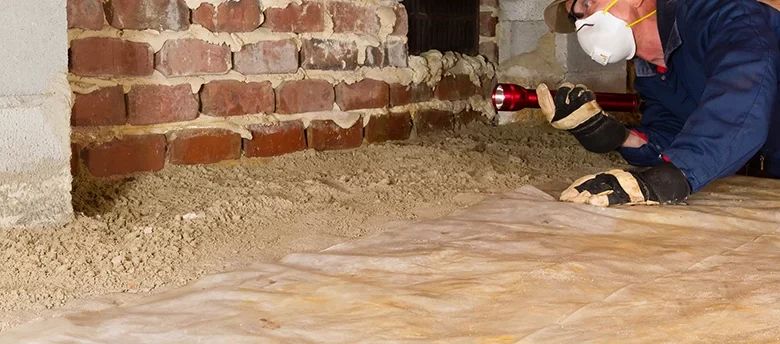
People are becoming more aware of how moisture enters their houses as well as the harmful effects it can have. As a result, it’s no longer possible to ignore the state of your crawl area! From the ground, water vapour permeates your crawl space and can even penetrate cement. People have begun encapsulating their crawl spaces to keep damaging moisture out of their homes because up to 50% of household air can flow up from their subterranean spaces.
Crawl Space Encapsulation is a term used to describe a method of enclosing crawl space.
Crawl areas are commonly encapsulated or sealed to prevent moisture problems. It’s similar to putting a liner in a pool to prevent leaks. A heavy-duty polyethylene barrier is installed to completely enclose your crawl space, including the flooring, foundation walls, and, in certain cases, the ceiling. When water vapor barriers completely enclose a place, they are most effective. Then, throughout the crawl area, the sealing tape is used to attach the barrier sections.
The next step is to condition the air within the crawl space to keep it at a healthy humidity level once it’s entirely sealed. Adding a dehumidifier to manage the moisture level is the most common way to do this. These steps will safeguard your crawl space, as well as the rest of your home, against excess moisture and the problems that accompany it.
Should Your Crawl Space Be Encased?
Excess moisture and water vapor might result in a variety of issues. Because of these prevalent indicators, most individuals enclose their crawl space:
- Mold
- An odor that is musty or mildewed
- Expensive air conditioning
- Insulation that absorbs moisture
- Windows that shiver.
- Problems with bugs
Enclosing your crawl space will not only solve these difficulties, but it will also enhance the air quality in your home, provide a hostile environment for bugs and termites, protect your home from fungal or mould problems, and make it more energy-efficient.
Encapsulation vs. Sealing
Some people confuse the phrases “sealing” and “encapsulation,” but they’re not interchangeable. When sealing, only cover the crawl area floor and about eight inches up the walls. The floor, walls, and ceiling of the area are completely encapsulated. Insulating the walls and any access doors is also a part of certain professional encapsulations.
Is it advisable to do it yourself?
When it comes to encapsulating their crawl space, most individuals turn to a professional. They’ll inspect your space to see if it’s suitable for encapsulation (not all crawl spaces are), as well as any Foundation Repair Tampa or moisture issues in the area.
You can perform it yourself, but doing so incorrectly might lead to a slew of complications. Before you start anything, at the very least, have an expert Foundation Inspection the area.
Consider these factors:
Many more issues could develop if your area is improperly sealed or encased. Bulk water problems are a major worry, and they should be addressed entirely before encasing a crawl space. Water stains on your foundation walls or standing water are symptoms of a large-scale water problem.
Some termite treatment providers limit how much of your crawl area can be covered, so check with them first, especially if you have an active termite bond.
There are additional considerations if you have any combustion equipment in your environment. Adjust for any possible back-drafting. Most individuals employ a professional because it is simply safer than doing it themselves because of these potential concerns.


